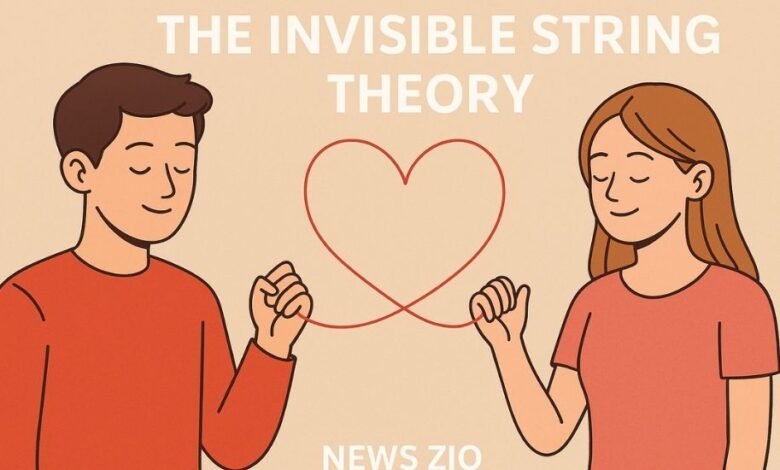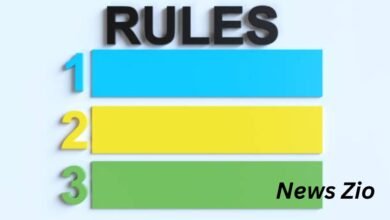The Invisible String Theory: Love, Soulmates, and Signs of Fate

Human beings have always searched for meaning in love, coincidence, and destiny. One concept that has surged in popularity through social media, modern blogs, and even psychology discussions is the Invisible String Theory. At its core, it is the belief that two people—often lovers, sometimes close friends or family—are connected by an unseen thread of fate that will inevitably bring them together. From its mythological roots to its modern interpretations in relationships, this theory blends spirituality, storytelling, and human psychology.
This article explores the invisible string theory in depth, weaving together its book origins, relationship applications, soulmate connections, examples, signs, related theories, popular quotes, and the lingering question: is the invisible string theory real?
The Invisible String Theory Book
Before the TikTok trend and blogosphere expansion, the phrase “Invisible String” gained mass attention through Patrice Karst’s 2000 picture book, The Invisible String. Although primarily a children’s book, it beautifully explains that love binds people together no matter the distance or circumstances. The book reassures children (and adults) that an invisible string connects them to everyone they love—even when they are apart or after a loss.
With more than two million copies sold worldwide, Karst’s book is frequently cited in discussions of the invisible string theory. Its simple yet profound message has made it a staple for families, therapists, and teachers. Importantly, it planted the seeds for applying the “invisible string” metaphor not only to family bonds but also to romantic relationships and the idea of soulmates.
Invisible String Theory in Relationships
In modern pop culture, the invisible string theory relationship meaning is often interpreted as a belief that your life partner or soulmate is already connected to you, regardless of time or distance. The unseen thread represents destiny, pulling you both toward eventual union.
For example, many people recount stories where they and their partner lived in the same city, attended the same events, or knew mutual friends for years before finally meeting. Believers in the theory interpret these as evidence of “the string” at work, guiding people toward each other when the timing is right.
Therapists note that while the theory is symbolic rather than scientific, it can provide hope, comfort, and a sense of order during the chaotic process of dating. However, experts also caution against using it as an excuse to remain in unhealthy relationships under the belief that “fate” dictates the bond.
Signs of the Invisible String Theory
Though unprovable, many blogs and relationship guides describe “signs” that the invisible string may be operating in your life:
-
Repeated coincidences – Running into the same person in different places or times in life.
-
Synchronicity – Experiencing symbolic overlaps, such as shared numbers, dates, or repeated references.
-
Uncanny timing – Meeting or reconnecting at a moment of deep personal change or need.
-
Familiarity at first sight – Feeling as though you already know someone upon meeting them.
-
Life paths crossing – Discovering you were in the same environments before ever officially meeting.
While skeptics call these examples “confirmation bias,” many people find personal meaning in them, interpreting coincidences as signs of destiny.
Invisible String Theory and Soulmates
Closely tied to the concept of soulmates, the invisible string theory often overlaps with the idea that every person has “the one” they are destined to meet. In this context, the thread is less about coincidence and more about spiritual design.
Some cultures tie this to the Red String of Fate, an East Asian myth describing a red thread tied around the ankles of destined lovers. This thread may tangle or stretch but never break, symbolizing inevitability. The invisible string theory is essentially a modern, Western adaptation of this ancient story.
In the soulmate version, the thread is viewed as unbreakable, regardless of distance, obstacles, or even breakups. The idea comforts people that no matter the chaos of life, their “true” person is already tied to them.
Theories Like the Invisible String Theory
The invisible string is not the only theory that romanticizes fate in relationships. Comparable concepts include:
-
The Red String of Fate / Red Thread Theory – Chinese and Japanese legend of lovers connected by an unbreakable red thread.
-
Twin Flames – New Age belief that each soul has a mirror “twin flame” that completes them.
-
Soul Ties – Spiritual idea that emotional, physical, or sexual bonds form lasting connections.
-
Synchronicity – Carl Jung’s psychological concept of meaningful coincidences guiding life events.
These parallel beliefs highlight humanity’s shared fascination with the possibility that love is orchestrated by something larger than chance.
Examples of the Invisible String Theory
Real-life stories make the theory especially appealing. People often share anecdotes like:
-
Discovering they lived on the same street as their partner years before meeting.
-
Running into the same person in multiple cities or events across time.
-
Childhood photos revealing both were present at the same theme park or concert before they knew each other.
-
Reconnecting with a long-lost acquaintance at precisely the right moment in life.
Celebrity culture also feeds into this narrative. For instance, Lola Consuelos, daughter of Kelly Ripa and Mark Consuelos, has shared that she believes in the invisible string theory after experiencing serendipitous connections.
Invisible String Theory Quotes
Inspirational quotes help popularize and humanize the concept. Some of the most circulated include:
-
“Invisible string theory is based on beliefs in fate, spirituality, and destiny.” — Wendy Walsh, PhD
-
“Even though you can’t see it, you are always connected to everyone you love.” — Patrice Karst, The Invisible String
-
“Sometimes the string stretches or tangles, but it never breaks.” — Adaptation of the Red String of Fate legend
-
“Perhaps the coincidences are not random; perhaps they are the threads pulling us home.” — Modern blog interpretation
These quotes encapsulate the hopeful and poetic qualities that make the theory resonate.
Is the Invisible String Theory Real?
The ultimate question: is the invisible string theory real? Scientifically, the answer is no. There is no empirical evidence that destiny threads exist or that coincidences prove spiritual bonds.
However, from a psychological and cultural perspective, the theory has real effects:
-
Psychological comfort – Provides hope during uncertainty in love.
-
Narrative building – Helps people make sense of coincidences.
-
Social bonding – Creates shared language for romantic storytelling.
Critics caution that believing too strongly can encourage passivity (waiting for fate instead of making choices) or rationalizing toxic relationships. The healthiest approach is to appreciate the metaphor while still prioritizing active, mindful relationship decisions.
Conclusion
The invisible string theory is not about science but about meaning. Whether found in a children’s book, in the myth of the red string, or in viral TikTok stories, it resonates because it gives people hope that love is not random chaos. Instead, it suggests that unseen forces are at work, guiding us toward those who truly matter.
In an age where relationships can feel uncertain, the invisible string theory is less about evidence and more about imagination, comfort, and connection. Whether you take it literally or metaphorically, its enduring popularity proves that humans are wired to believe in destiny.
For more thoughtful takes on love, relationships, and cultural trends, visit News Zio—your source for modern insights.
